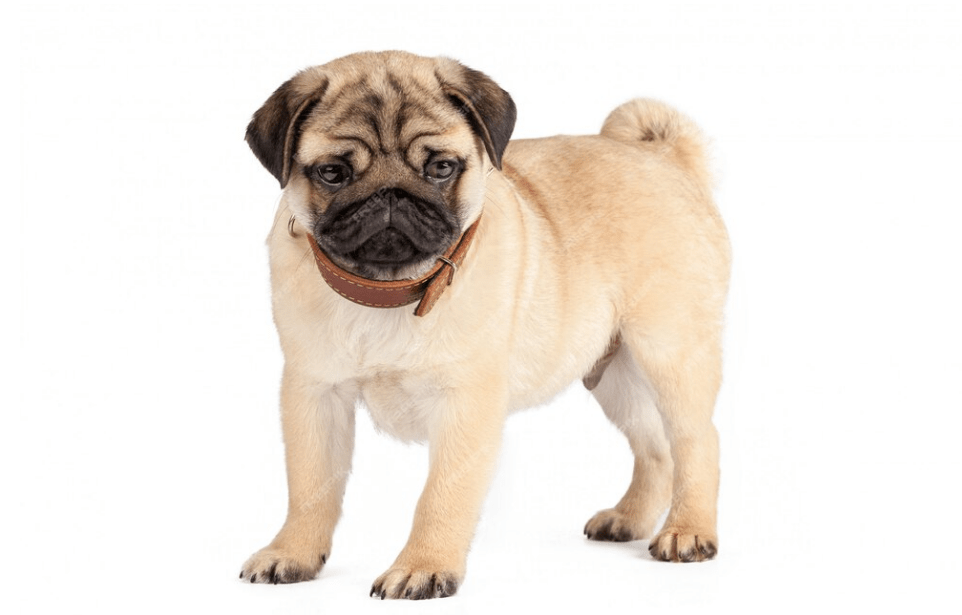Greetings, fellow bulldog enthusiasts. Today, we embark on a wagging adventure to unravel the mysteries of our beloved English Bulldogs’ expressive appendage. Have you ever wondered if these adorable creatures can wag their tails? Well, wonder no more. We’ll dive deep into the fascinating world of bulldog tail wagging. Get ready to decode their emotions and uncover the hidden messages behind those delightful swishes. So please sit back, relax, and prepare to be amazed by our wrinkly-tailed friends’ unique communication style. Let’s get started.
Tail Wagging In Bulldogs: Understanding Their Expressions
When understanding our English Bulldogs, their tail wagging can be a fascinating aspect to decipher. While most people associate tail wagging with happiness or excitement in dogs, bulldogs have their unique way of expressing themselves through this movement.
First and foremost, it’s important to note that not all tail wags are created equal. Bulldogs tend to have shorter tails compared to other breeds, which affects the range and intensity of their wagging. Instead of a comprehensive sweeping motion, you might notice more subtle movements or even just a slight twitch.
But fear not. Just because the wag isn’t as pronounced doesn’t mean there isn’t meaning behind it. Bulldogs often use their tails as an emotional barometer. A slow and relaxed wag may indicate contentment or relaxation, while a rapid back-and-forth motion could signal excitement or anticipation.
It’s crucial to pay attention to other body language cues when interpreting your Bulldog’s tail movements. Are they holding their body stiffly? Is there tension in their facial expression? These factors can provide additional context for understanding what your furry friend tries to convey.
Stay tuned as we delve further into the intricacies of bulldog body language and unravel the mysteries behind these expressive creatures’ communication styles. Get ready for some enlightening insights into our wrinkled companions’ world.
The Bulldog Tail: Anatomy And Wagging Range

Regarding the English Bulldog, their tail is a unique feature that adds character to their overall appearance. Understanding the anatomy of this distinct tail can help us better interpret its wagging range.
The Bulldog’s tail is set low on its body, giving it a distinctive look. It is thick at the base and tapers gradually towards the end. Unlike other breeds with long, flowing tails, Bulldogs have short and straight ones that may curl slightly upwards.
Regarding wagging range, Bulldogs have limited mobility compared to some other breeds. Due to their specific tail structure, they cannot achieve the same wide sweeping motions as dogs with longer tails. Instead, Bulldogs tend to exhibit shorter and more subtle movements when wagging.
Despite these limitations in wagging range, Bulldogs still manage to express themselves through their tails. A slight flick or wiggle can indicate excitement or happiness, while a stiff or tucked-under tail may signal fear or anxiety.
Bulldog owners need to pay attention not only to the movement but also to the position of their dog’s tail when interpreting its meaning. A high-held or vigorously wagging tail generally suggests confidence and contentment, whereas a lowered or tucked-under seat could signify submission or unease.
Knowing your Bulldog’s temperament and quirks will further enhance your understanding of what they’re trying to communicate through tail movements. Each dog has its unique way of expressing emotions.
While Bulldogs may not have as much flexibility in their tails as some other breeds do, it doesn’t diminish the importance of this expressive appendage in conveying messages between them and humans alike. So next time you see your English Bulldog happily wiggling its adorable little nub of a tail, remember that it’s speaking volumes without uttering a single bark.
Emotional Signals: When Do Bulldogs Wag Their Tails?
When understanding our furry friends, it’s essential to decode their body language. Bulldogs, known for their unique appearance and lovable nature, have a tail that adds an extra element of cuteness. But does this adorable breed wag their tails like other dogs? Let’s dive into the emotional signals behind bulldog tail wagging.
Bulldogs may not be as exuberant in tail and wagging as some other breeds, but they have their way of expressing themselves. A wagging tail in a bulldog often indicates happiness and excitement. You may notice a slight wag or even just a quiver at the base of the seat when they’re feeling content.
To truly understand what your Bulldog is trying to convey with its tail movements, observe the context and accompanying behaviors. Are they wagging while playing fetch? That likely means pure bliss. Are they growling with a high-held stiff tail? This could indicate aggression or dominance.
Bulldog Body Language: Interpreting Tail Movements
Bulldogs may not be known for their expressive tails like other dog breeds, but that doesn’t mean they don’t communicate through their wagging appendages. Understanding bulldog body language, especially tail movements, can provide valuable insights into your furry friend’s emotions.
When it comes to tail movements in English bulldogs, there are a few things to remember. Bulldogs typically have short and tightly curled tails that sit low on their bodies. While they may not have the full range of motion as other breeds, their seats can still convey essential messages.
One everyday tail movement seen in bulldogs is a slow side-to-side wag. This gentle swaying motion often indicates relaxation and contentment. It’s a sign that your Bulldog feels at ease and comfortable in its surroundings.
On the other hand, if you notice your Bulldog’s tail standing up straight or vibrating rapidly, it could be a sign of excitement or anticipation. This type of wag suggests that your pup is happy and eager about something happening around them.
By observing these subtle signals from your English Bulldog’s wagging tail, along with other aspects of their body language, you’ll be better equipped to understand what they’re trying to convey. So next time you see those adorable stubby tails moving around, take note. Your four-legged friend might share something meaningful with you through those limited but expressive wags.
Tail Wags and Communication: What Your Bulldog Conveys
When communicating their emotions, English Bulldogs have a unique way of expressing themselves through tail wagging. While some may believe that Bulldogs don’t wag their tails like other breeds, this is untrue. Bulldogs do indeed wag their seats but in a different manner.
The position and movement of the tail can convey various messages from your Bulldog. A slow and gentle wag usually indicates contentment or relaxation. It shows that your furry friend is happy and at ease in its surroundings.
On the other hand, a fast and vigorous wag often signifies excitement or joy. You might notice your Bulldog’s whole body wiggling with enthusiasm when it greets you after being apart for some time.
Yet, it’s important to note that not all tail movements are positive indicators. If your Bulldog holds its tail low between its hind legs or tucks it under its body completely, this could be a sign of fear or anxiety.
Similarly, if the tail is held high stiffly without movement, it may indicate aggression or dominance. In such cases, it’s crucial to observe the overall body language of your Bulldog to understand what message they are trying to convey fully.
So next time you see your English Bulldog wagging its tail, pay attention to the context and accompanying body language. This will help you better understand what message they are trying to convey, whether it be happiness, excitement, fear, or something else entirely.
Stay tuned for our next blog to discuss Tail Health and Care: Maintaining a Happy Bulldog Tail.
Tail Health and Care: Maintaining a Happy Bulldog Tail
Taking care of your English bulldog’s tail is essential for their well-being. Here are some tips to ensure a happy and healthy tail:
1. Regular grooming: Like any other part of your Bulldog’s body, their tail also requires regular grooming. Brushing the fur gently will help keep it clean and free from tangles.
2. Monitor for injuries or infections: Bulldogs can be prone to injuries on their tails due to their compact size and low-hanging seats. Look for any signs of damage, such as cuts, swelling, or discharge. If you notice anything unusual, consult your veterinarian immediately.
3. Cleanliness is critical: Clean your Bulldog’s tail regularly to prevent dirt buildup and odor. Use a mild shampoo specifically designed for dogs and rinse thoroughly.
4. Protect against parasites: Fleas and ticks can cause discomfort not only on the body but also on the tail area. Use flea prevention products recommended by your vet to protect your furry friend from these pesky parasites.
5. Avoid excessive docking or cropping: While some breeders may opt for tail docking or cropping in English bulldogs, it is essential to note that these procedures have ethical considerations in many countries.
Following these guidelines, you can maintain a happy and healthy tail for your English Bulldog.
Remember that while wagging tails might not be as common in English Bulldogs as other dog breeds, they still express themselves through various forms of body language, including subtle movements of their unique curly tails! Understanding this aspect enables us to better connect with our four-legged friends and give them the love and care they deserve.


